I recently had another Keiyo Seiki/Homach lathe owner contact me, and I mentioned that I had been meaning to get around to posting a copy of the manual that came with my machine. It turns out that other owners have been looking for one, so hopefully this helps a few people: Keiyo Seiki Homach KM-1800C […]
I recently had another Keiyo Seiki/Homach lathe owner contact me, and I mentioned that I had been meaning to get around to posting a copy of the manual that came with my machine. It turns out that other owners have been looking for one, so hopefully this helps a few people: Keiyo Seiki Homach KM-1800C lathe manual
When I purchased my lathe, it came with both a 3-jaw and a 4-jaw chuck – the 3-jaw was mounted to the headstock and the 4-jaw was in a box. However, the first time I wanted to try using the 4-jaw, I discovered that the chuck uses a D-6 camlock mount, not the A-6 mount that the lathe spindle actually has. Apparently I had been given the incorrect chuck, but it had been long enough that I didn’t have the seller’s information anymore.
My first thought was to see if I could somehow mount the 4-jaw with an adapter plate of some sort – the jaw body itself mounts to a ‘spider’ that has the camlock lugs on it, so all I would need to do is to replace the spider with a backplate. Well, in an ideal world, that would be the case. The screws that attach the spider to the chuck body are attached from the spider side, not from the front face of the chuck. Thus, using an adapter plate would be a mechanical impossibility with no way to reach the attaching screws. So now I have a D-6 4-jaw that needs a new home, and I needed to start from scratch. Off to Enco!
Enco did in fact have the sort of 4-jaw chuck I was looking for (I selected it based on the size of object it could pass – anything smaller than the headstock ID would be wasteful), so I purchased it during one of their free shipping promotions. All I needed then was a backplate, which I procured from “Industry Recycles” on Ebay. I think it was actually an Enco offering but I managed to snag it for about half price. Score!
Unlike the backplate for the 5C collet chuck, this backplate mounted up just fine. The trick, then, was mounting the chuck to the backplate rather than mounting the backplate to the lathe. Mounting hardware was easily purchased from McMaster-Carr, and then it was time to start making holes in things.
Given my experience with the 5C collet chuck mounting, I decided to be a little more precision oriented this time around. I started by measuring the hole locations on the chuck itself. Using calipers and screws inserted into the mounting holes, I measured the distance across each pair of screws (both ‘inside’ and ‘outside’ measurements).
I found that the locations of the four mounting bolt centerpoints differed by about 5 thousandths of an inch. Instead of just basing my cuts on a single measurement, I opted to use the average instead, which came out to be a bolt circle of 5.10425″, or a radius of 2.552″. Easy work – put the backplate in the vise in an orientation that will clear the existing holes, indicate the center bore, and drill 4 holes at +X, -X, +Y, and -Y locations of 2.552″.
Wait, the Y handwheel stopped….
Noooooooooo! I ran out of travel little more than an eighth of an inch from the lowest hole location. I started to resign myself to moving the vise to a new location on the table (I hate having to re-indicate in a vise almost as much as tramming the head), when I realized “duh, just rotate the hole pattern by 45 degrees”. So each hole would be at X/Y +/- 1.8045″.
After drilling, I ran a M14x2.0 tap through the holes.
The backplate mounts just fine to the lathe spindle….
And the 4-jaw mounts just fine to the backplate! I started right in on drilling some Delrin for a new product offering.
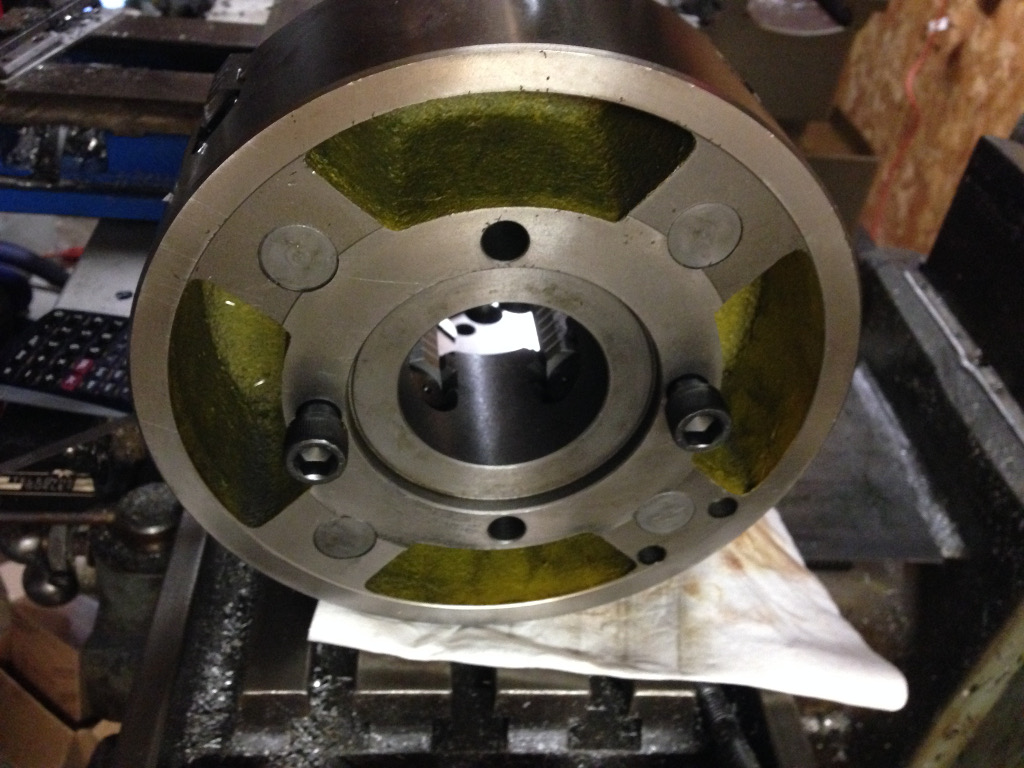
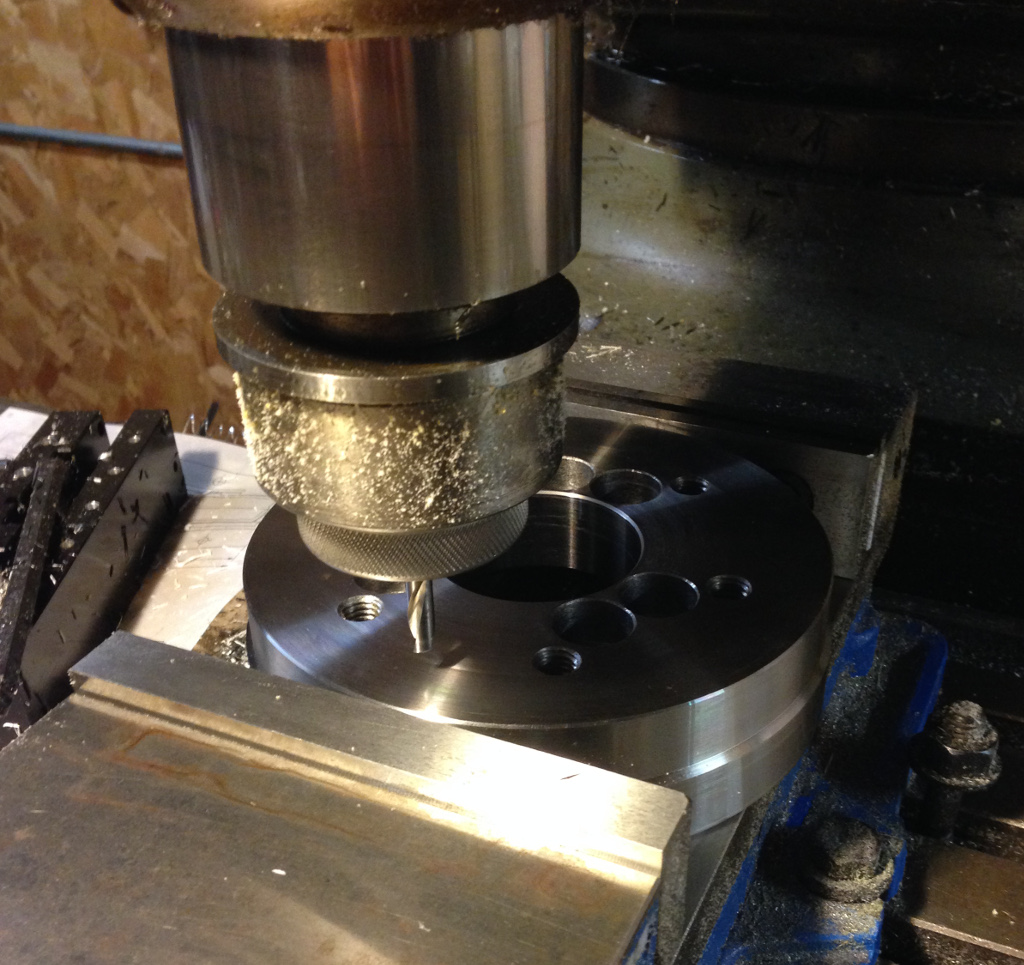
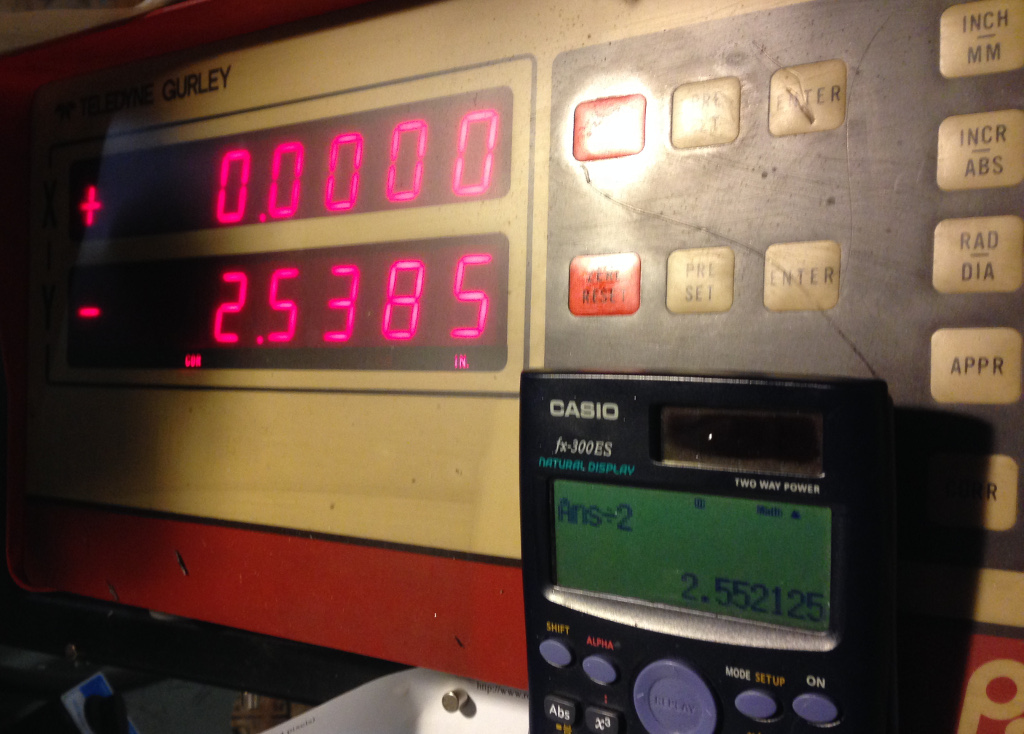
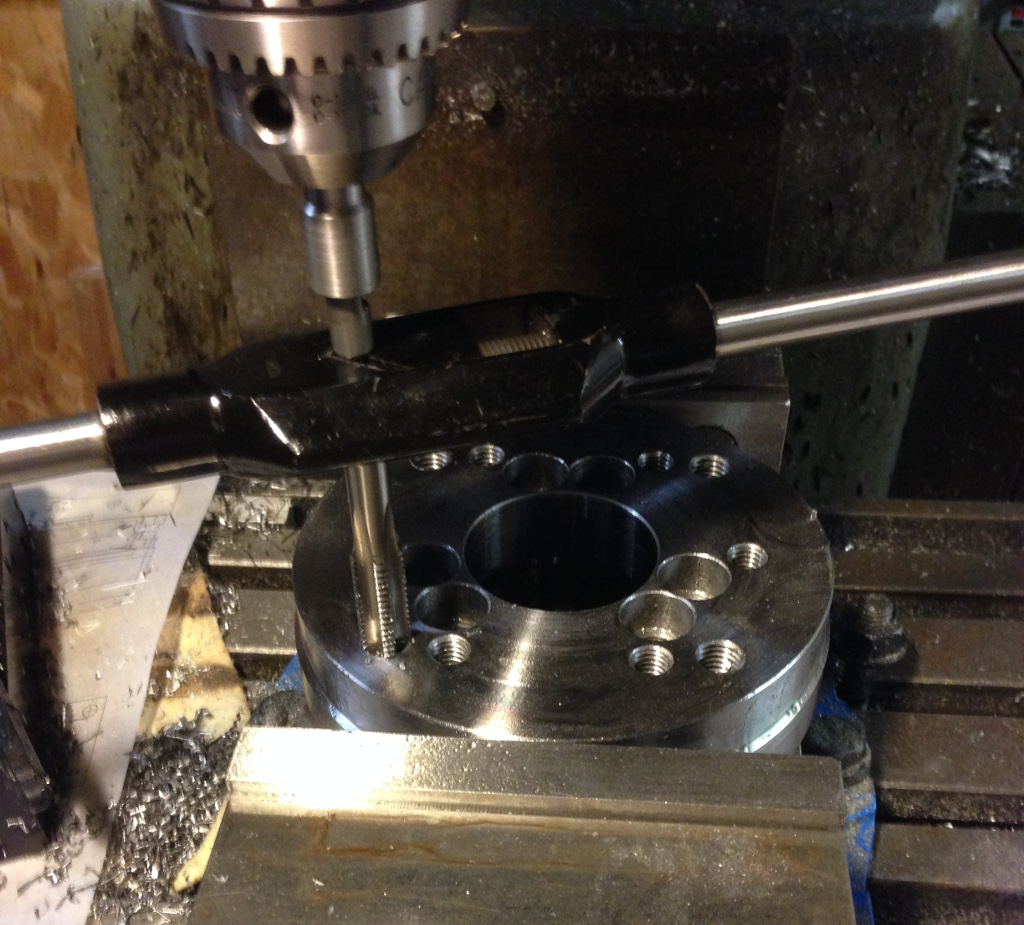
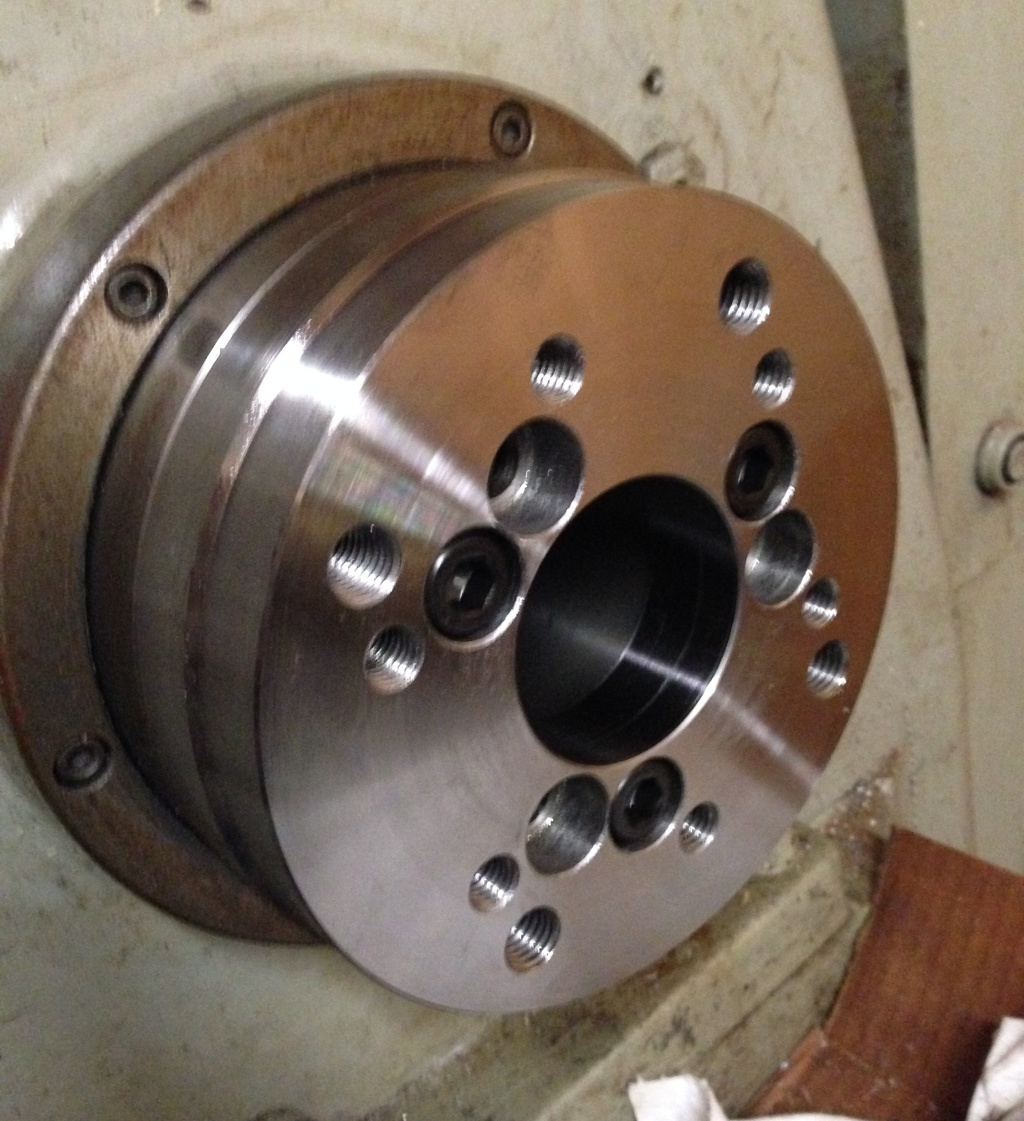
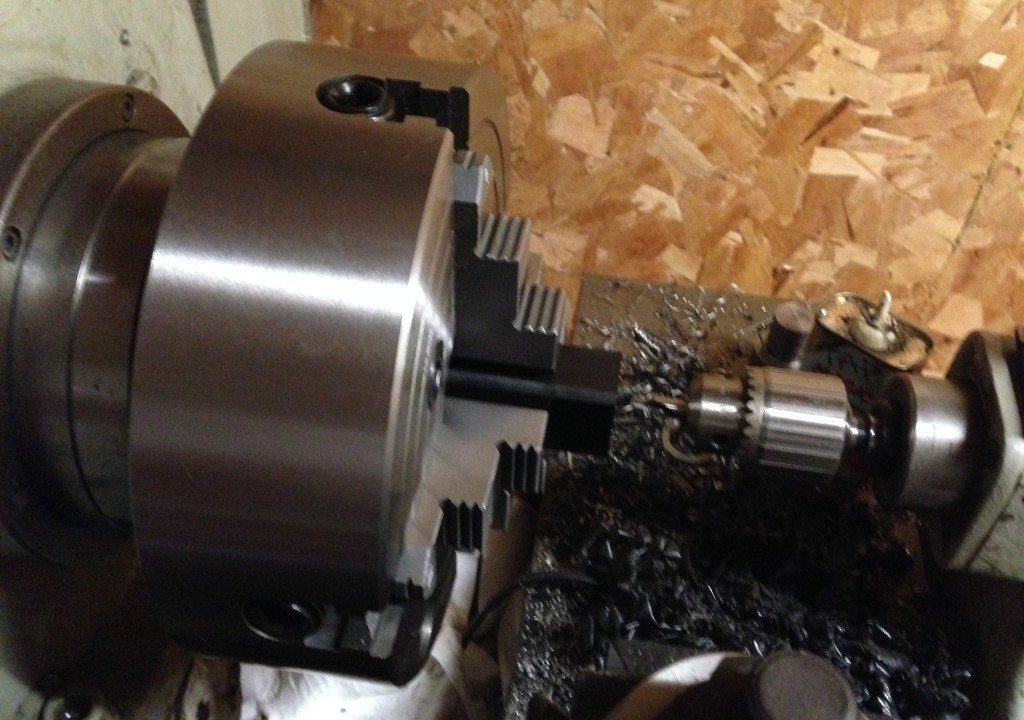
What’s ideal of chuck to used ?
The link for the KM1800 manual does not seem to work. Any chance you could email me a copy of the file? I have searched everywhere for this manual with no luck. Thank you!!
Thanks for the note – just fixed it!